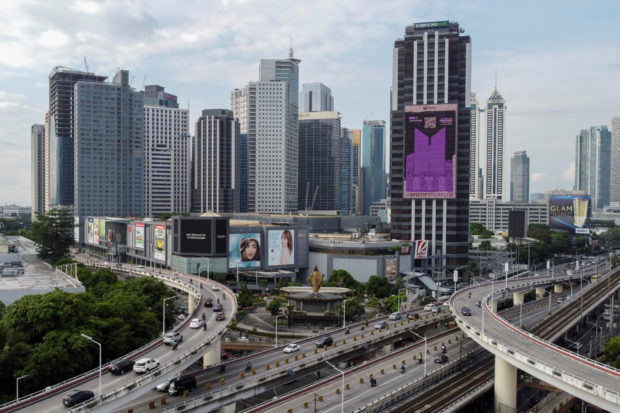Philippine July inflation highest since 2018

An aerial view shows the Ortigas business district in Pasig City, Philippines. Picture taken with a drone. REUTERS/Adrian Portugal/File photo
MANILA -Philippine inflation accelerated to its fastest pace in nearly four years in July, government data showed on Friday, maintaining pressure on the central bank to further tighten monetary policy at its Aug. 18 meeting.
The consumer price index rose 6.4 percent in July from a year earlier, driven by higher transport and food prices, the Philippine Statistics Authority said.
The headline figure, the highest since October 2018, was above the 6.2 percent median forecast in a Reuters poll and at the top end of the 5.6 percent-6.4 percent range projected by the central bank.
Inflation in January-July averaged 4.7 percent, versus the central bank’s 2 percent-4 percent target band.
The Bangko Sentral ng Pilipinas (BSP) has raised interest rates by a total of 125 basis points this year, including an off-cycle hike of 75 bps last month, joining peers around the world in a scramble to curb inflation.
Article continues after this advertisementWhile BSP Governor Felipe Medalla has ruled out another hike outside the regular policy review schedule, he has flagged the possibility of a further increase of 25 bps or 50 bps at the meeting later this month.
“The BSP is prepared to take all necessary policy action to bring inflation toward a target-consistent path over the medium term,” it said following the data release.
The BSP expects 2022 average inflation of 5 percent, exceeding its target, boosted by persistent supply-side pressures. For 2023, however, it expects inflation to fall within the 2-4 percent target range.
Medalla has also said the BSP was prepared to address risks to inflation from a weak peso, which has stabilized following the central bank’s recent hawkish tone.
Analysts said the peso remains vulnerable to depreciation given the Philippines’ current account deficit and the prospect of further tightening by the U.S. Federal Reserve.
The policy decisions after the Aug. 18 meeting will depend on data, Medalla said.